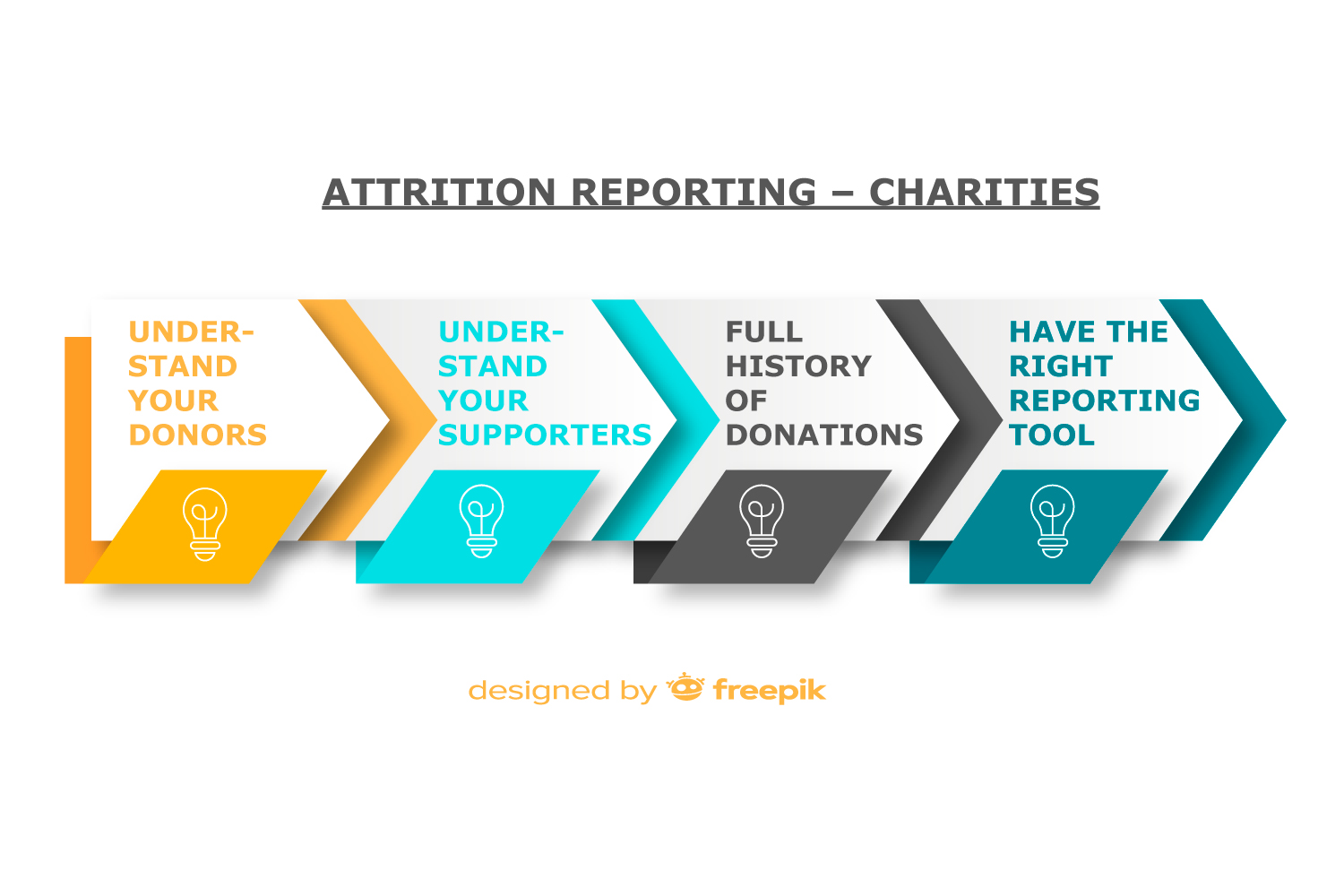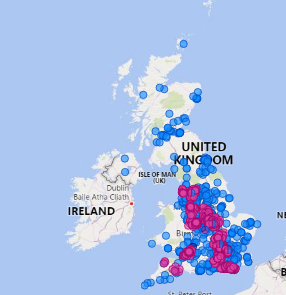Attrition Reporting – Charities
Being aware and understanding the reasons behind the movements in your donor and volunteering base has never been more crucial to charities.
COVID-19 brought many operational issues to organisations across all sectors but also had a huge effect on charities with the drop off in donations, which hit these organisations hard.
As restrictions loosened and everyone got used to a “new normal”, charities quickly had to review their donor and volunteer activities as they geared up to recover from this downturn. Having the reporting capabilities to do this was critical, and this short guide will focus and guide organisations on how to get the best of this information.
There are 4 main areas of focus to ensure you have a true reflective attrition picture:
- Understanding your donors
- Understanding your volunteers
- Full history of donations
- Have the right reporting tool available

Understanding your donors.
Most charities record basic information with regards to their donors ensuring basic compliance with General Data Protection Regulation (GDPR) requirements. This can be used to great effect, as long as other elements are captured too. Recording Post Codes will allow you to plot geographical hotspots. Recording an individual’s gender will enable you to see if your organisation has more of an appeal to a certain demographic, whilst recording “First Donation Date” against a donor will quickly allow you to see how long donors have been giving for.
What this also allows is for you to easily identify any upward or downward trends in donor attrition. This will enable you as an organisation to target marketing to key areas along with focusing on reasons or any localised competitors for donations if there is a sudden loss of donors within one geographical area.

Understanding your volunteers
Your volunteers are quite often donors in their own right, therefore it is essential to really get to grips with any attrition in this area.
Having a flag within your “contact” records to indicate whether someone is a volunteer or not is a great way of quickly having the data at your fingertips around the location, gender, and age.
Separately to the above, you should also look to record their volunteer start date (along with the legislative requirements that brings) and volunteer role(s).
You can soon build up a picture of your volunteering base, with really good data. It is then critical to hold a “Volunteer End Date” and “Volunteer Reason”.
All this data will enable your organisation to have a full picture and track all movements against your volunteering base. Seeing any trends around roles, leave reasons and geographical similarities will allow your organisations to mitigate this as soon as possible.

Donation transaction history
Attrition can be calculated in a number of different ways depending on specific organisational processes and donation attrition is one of these areas. Some organisations run attrition based on value alone whereas some do it on a number of donations basis.
In either of these methods, organisations must ensure they have all donation transactions including links to the type of donation. For example, legacy donations can skew attrition rates when based on values, causing spikes in one year and a drop off the next.
Understanding the type of donation will enable organisations to provide attrition analysis “per type”, giving a more accurate picture of general donor attrition.


Reporting tools
To really bring your data to life, it would be essential to have a reporting tool/platform which adds value to your data.
Reading some of the other guides within this series on reporting, you will see a common theme where choosing the best reporting tool for you is based on a number of key factors: –
- It must be scalable
- It must incorporate multiple data sources if you use a number of systems
- It must meet the needs of not only the person producing the report, but the audience too
The message is, the reporting tool should enhance your data into something meaningful which can be acted on. Be aware that the wrong reporting system may actually cause more issues and be more time-consuming than you would wish.
Summary
Ensuring you record as much information against records as described above, whilst at the same time complying with all GDPR requirements, will really allow you to understand not only the negatives but the positive actions of your contacts.
Although you cannot stop donor, donation, and volunteer attrition, ensuring you have the right data in the right format(s) and using the right reporting tool will enable you to identify trends and act on them as quickly as possible.
Our mhance experts are available to help you and your organisation with your reporting strategy. We welcome the opportunity to discuss and share our experience with you. Get in touch now!
Authored by Daniel Booth




